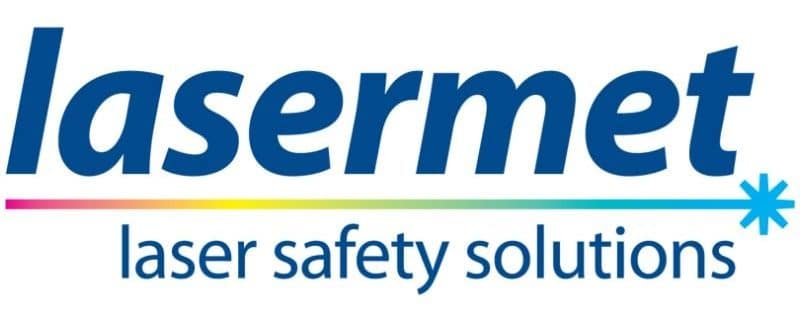Changes Made in the 2001 & 2007 Revisions of the Standard
The main differences are in condition 2 (Magnifiers), where the measurement conditions have been changed to:
- 7mm aperture at 70mm for point sources and
- 3.5mm aperture at 35mm for extended (non-point sources).
Other changes are not detailed here, but copies of the most recent standard are available from Lasermet.
Changes Made in the 2001 Revision of the Standard
In the year 2000, a major revision of the European and International laser safety standards IEC 60825-1 and EN 60825-1 was carried out, and the new versions of the standards entered into force on January 1, 2001.
The following information highlights some of the most significant changes from the previous 1994 edition.
Principal Changes |
|
| 1) | New Classes 1, 1M, 2, 2M have replaced Laser Classes 1, 2 and 3a. Lasers classified previously as Class 1 or Class 2 are unaffected.
Classes 3B and 4 remain unchanged, but some laser and LED products that were previously classified as Class 3B are now classified as Class 1M, 2M, or 3R. The new Class 3R lasers have accessible emission that is less than five times the Class 2 limit between 400 and 700 nm, or less than five times the Class 1 limit at other wavelengths. There is no class 3R for the wavelength range of 180 nm to 302,5 nm. The new laser classes are described below. |
| 2) | The MPE and AEL tables have been updated to reflect new data for ultra short pulses. (10-13 to 10-9 s).
To account more accurately for the damage mechanisms for longer exposure times, the MPEs between 400 and 600 nm for exposure times greater than 10 s have been drastically revised. In this range, both the retinal photochemical hazard and the retinal thermal hazard must be calculated separately. C3, the wavelength dependent term that existed previously between 550 and 700 nm, has been removed. It has been replaced by C3, a wavelength-dependent term that only applies to the retinal photochemical hazard between 450 and 600 nm. .A new variable gamma b (the angle of acceptance) operating between 400 and 600 nm has been introduced. This only applies to the retinal photochemical hazard. The MPE/AEL equations distinguish between alpha = 1.5 mrad (point source) and alpha > 1.5 mrad (intermediate or extended source) between 400 nm and 1400 nm. The term T2 has been coined. This is affected by the upper limit of exposure for long periods and is dependent on source size (angular subtense). |
| 3) | The measurement aperture requirements for accessible emission evaluation have been revised. IEC/EN 60825-1 (1997) permitted measuring accessible emission with either a 7 mm or a 50 mm diameter aperture. The revised document includes two new conditions, the most stringent of which is:
Depending on the apparent source size, measurements should be taken with a 50 mm aperture at a distance of 2 m and a 7 mm aperture at ranges between 14 mm and 100 mm. The 50 mm aperture is reduced to 25 mm outside of the wavelength range 400 nm to 1400 nm. |
| 4) | The users section (section 3) and the appendices have received minor updates. Appendix B (Medical Concerns) has been updated. For the first time, two new appendices are included: an advisory list of information to be provided by LED manufacturers to assist users in assessing the hazard from these, and an overview of the associated parts of the IEC 60825 – X series of standards (now in 14 parts). |
| 5) | The preceding is a selected summary of the changes in the 2001 edition of IEC/EN 60825-1. There are numerous more detailed changes, some of which have a significant impact while others are simply cleaning up or clarification exercises. |
What are the New Laser Classes? |
|
| Class 1 | Under reasonably foreseeable conditions, these lasers are safe. (Unchanged) |
| Class 1M | Under reasonably foreseeable conditions, these lasers are safe if optical instruments (magnifiers, telescopes, or binoculars) are not used. The total output of the laser product is not limited (though the laser must not exceed the Class 3 B limit). These are most likely lasers or LEDs with divergent beams, but they may also include products with wide collimated beams. |
| Class 2 | These lasers have visible wavelengths (400 nm to 700 nm). They are safe as long as they do not blink or avert their gaze. |
| Class 2M | These lasers can be seen. They are secure as long as no optical instruments are used and the blink or aversion responses are activated. The total output of the laser is not limited (though it must not exceed the Class 3 B limit). These are most likely lasers or LEDs with divergent beams, but they may also include products with wide collimated beams. |
| Class 3R | These lasers are visible. They are secure as long as no optical instruments are used and the blink or aversion responses are activated. The total output of the laser is not limited (though it must not exceed the Class 3 B limit). These are most likely lasers or LEDs with divergent beams, but they may also include products with wide collimated beams. |
| Class 3B | These lasers have the potential to cause harm. See the current standard. (Not changed, but some products previously classified as 3B now qualify for class 1M, 2M, or 3R). |
| Class 4 | These are referred to as “high power” lasers. They have an output power greater than 0.5 W for constant wave (CW) products. This class has no upper bounds. (Unchanged). |
